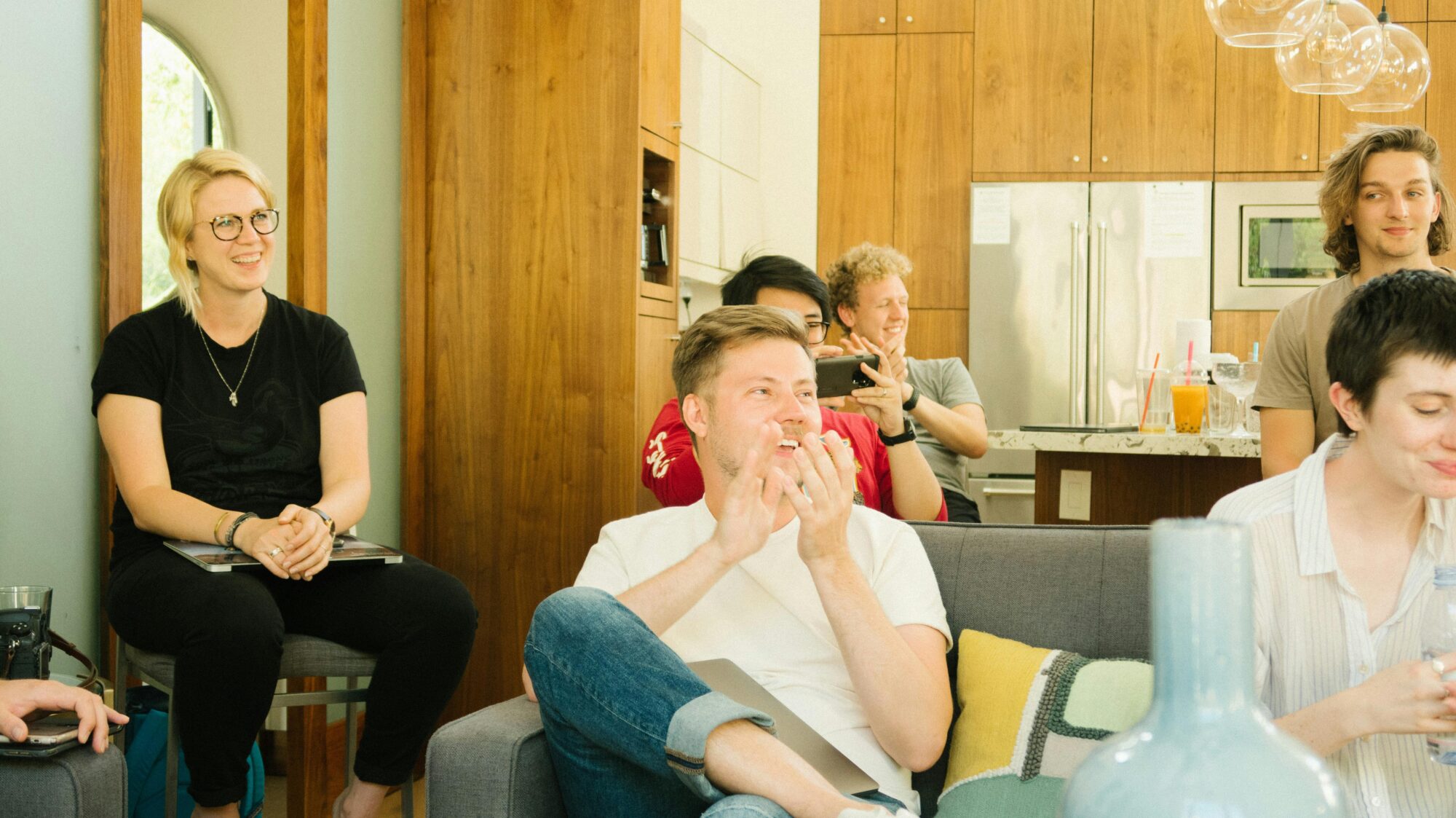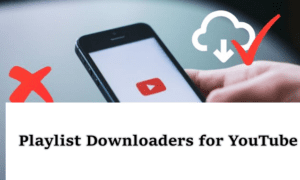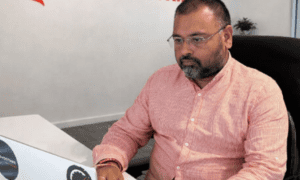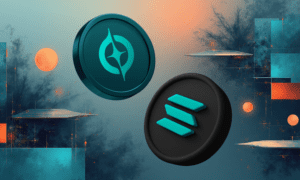19 Team-Building Ideas That Boost Startup Productivity
Startups are constantly seeking innovative ways to enhance team productivity and cohesion. This article presents a curated list of team-building ideas that have been proven effective by industry experts. From aligning creativity with business value to transforming team empathy through role shadowing, these strategies offer practical solutions for startups looking to boost their performance and foster a more collaborative work environment.
- Align Creativity with Business Value
- Simulate Company Operations for Holistic Understanding
- Collaborate on Real Metrics for Quick Wins
- Escape Room Challenge Boosts Team Cooperation
- Remote Hackathon Solves Internal Workflow Issues
- No-Work Hackathon Breaks Down Departmental Silos
- Silent Trek Enhances Nonverbal Team Communication
- Creative Challenge Highlights Hidden Team Strengths
- Cross-Functional Sprint Sparks Real Service Innovation
- Mission Mapping Connects Roles to Core Promise
- Unplugged Retreat Builds Genuine Team Connections
- Competitive Marketing League Drives Charitable Giving
- Performance-Based Trip Enhances Cross-Departmental Collaboration
- Hack Day Fosters Innovation and Cross-Functional Teamwork
- Zero Base Day Flattens Hierarchy
- Startup Olympics Boosts Cross-Functional Project Success
- Exotic Workations Combat Burnout and Boost Satisfaction
- Role Shadowing Day Transforms Team Empathy
- Role Swap Day Improves Interdepartmental Understanding
Align Creativity with Business Value
The most effective team-building activity I organized was a “Build Your Own Feature Day.” Instead of a hackathon, we picked a real customer pain point and gave the team a full day to ideate, design, and ship a solution – no managers, no roadmap, just one shared goal. It worked because it aligned creativity with business value.
One junior dev paired with a designer and reworked an onboarding flow that reduced user drop-off by 15%. That built huge confidence and sparked more cross-functional collaboration afterward. The vibe changed – people felt heard, trusted, and empowered. We saw better communication and faster iteration in the weeks that followed.
The takeaway: don’t separate “team-building” from real work – create space where people can solve meaningful problems together.
Jayen Ashar, CTO, Scaleup Consulting
Simulate Company Operations for Holistic Understanding
The best team-building activity we’ve done was a mock handling of my own company. I split the team into different departments – marketing, sales, content, HR, and operations – and kicked off a full-day simulation. We set quarterly goals, introduced a mock currency, added curveballs like pivot calls and bonuses, and ran the whole thing in a five-hour sprint.
Each ‘quarter’ ran for an hour, and the final hour was reserved for a deep dive, analyzing decisions, sharing takeaways, and reflecting on the experience. The real magic was in how immersive it became. People stepped out of their usual roles and saw how other departments function, the challenges they face, and how interconnected every decision really is.
It heightened their awareness, sharpened decision-making, and built a more collaborative mindset. The pressure was real at times, but that’s what made it impactful. By the end, there was a clear shift: they were thinking more holistically, solving problems faster, and showing a whole new level of ownership.
Saksham Gogia, Co-founder and Managing Director, WrittenlyHub
Collaborate on Real Metrics for Quick Wins
Our favorite team-building activity is our quarterly KPI jam. We bring engineers, support, marketing, and product teams together, ditch the slides, and grab sticky notes to tackle our real metrics, including activation, support times, demo-to-signup rates, and other important KPIs to ensure everyone is on the same page.
Because everyone’s pitching in, we end up with quick wins: snappier onboarding emails, UI fixes, and missing help documentation filled in. It’s super casual, builds real empathy, and turns roadblocks into team wins, with no forced fun required.
We also host fun holiday calls where the whole team hops on just to play trivia, share recipes, or swap bucket-list goals. These laid-back moments remind us there’s more to work than KPIs and deadlines, and they bring everyone closer, even across departments that don’t usually cross paths.
Nick Chandi, CEO & Co-Founder, Forwardly
Escape Room Challenge Boosts Team Cooperation
Organizing an escape room challenge proved to be the most effective team-building activity for my startup, as it demanded real-time collaboration and pushed every participant to communicate with clarity and urgency. The pressure of solving puzzles within a strict timeframe required the group to rely on each other’s strengths, which broke down social barriers and sparked genuine cooperation. After this experience, I noticed employees who previously worked in isolation started to initiate conversations and share ideas more openly, which translated into smoother project workflows and faster problem resolution.
The sense of accomplishment from completing the challenge together boosted morale, while the necessity for trust and quick thinking during the activity carried over into daily operations, making the team more resilient and adaptable. This single event did not just improve interpersonal relationships; it resulted in a tangible increase in productivity, as employees felt empowered to collaborate and support each other in achieving common goals.
Richard Dalder, Business Development Manager, Tradervue
Remote Hackathon Solves Internal Workflow Issues
From my experience in my startup, the most successful team-building event was a remote hackathon focusing on solving internal workflow problems. I think it worked because it combined technical collaboration with creativity and allowed cross-functional teams to work on real-world issues.
This exercise improved our teamwork by promoting knowledge-sharing and breaking down departmental silos.
It also enhanced productivity as it produced real solutions that streamlined our day-to-day activities and provided employees with a greater sense of ownership.
George Fironov, Co-Founder & CEO, Talmatic
No-Work Hackathon Breaks Down Departmental Silos
The “No-Work Hackathon” is one of the most productive team-building activities that I have planned. It was a whole-day activity in which we were divided into teams across departments to solve real-life but fun problems that were not related to our day-to-day activities at work.
It was not about output, but cooperation without pressure. Developers now had partners in the designers, marketers had the project leads, and all of a sudden, the silos came down. Our hidden talents were revealed there, new ideas were created, and lastly, we had a good time.
The domino effect? Better and improved communication, more compassion during crunch periods, and a confidence level that we could sense in the team. It made us realize that innovation flourishes when individuals are together and that, at times, the solution to moving a team forward together is to take a break from the routine.
Rahul Gulati, Founder, GyanDevign Tech
Silent Trek Enhances Nonverbal Team Communication
One of the most memorable team-building activities we organized was a “Silent Trek” through the Western Ghats. No phones. No talking. Just the sound of footsteps, birdsong, and the occasional grumble from someone missing their morning chai. It wasn’t meant to be some spiritual thing—just a chance to strip away the usual noise and really feel present with each other.
At first, it was awkward. You could sense the itch to fill the silence, crack a joke, or check a Slack notification that didn’t exist. But something shifted halfway through. We started noticing each other’s rhythms—how someone paused to help a teammate over a rock, or how another shared water without a word. It was like we learned to read each other without needing to speak.
Back at work, it showed. Meetings got quieter, but deeper. There was more listening. Less jumping in. And weirdly enough, our project handoffs got smoother. That trek taught us to slow down, observe, and trust the people walking beside us—even when the trail wasn’t clear.
Serbay Arda Ayzit, Founder, Insightus Consulting
Creative Challenge Highlights Hidden Team Strengths
One of the most effective team-building activities we organized was a hands-on creative challenge where each team had to design and pitch a mock brand, complete with a logo, slogan, and wrap concept, using only basic supplies. It was fun, fast-paced, and forced everyone to collaborate outside of their usual roles. Designers, installers, and administrative staff all contributed equally, which helped break down silos and highlight hidden strengths. The energy carried back into our real projects, with noticeably better communication and mutual respect across departments. It reminded everyone that creativity and teamwork aren’t job titles; they’re habits you build together.
Nick Vitucci, Head of Marketing, Declare Media
Cross-Functional Sprint Sparks Real Service Innovation
To be really honest, the most effective team-building activity we have ever done was a “build-a-service” sprint, a one-day challenge where cross-functional micro-teams had to invent, brand, and pitch a new service idea based on our existing capabilities.
It was not just fun; it pushed people out of their usual roles. Designers collaborated with marketers, ops folks worked with writers, and everyone got a crash course in each other’s thought processes. The winning idea actually made it into our service roadmap six months later.
The impact? Way more empathy across roles and a noticeable boost in collaboration speed. When people understand how others think, they solve problems faster and communicate with less friction. Team-building does not always have to be off-site; it can be high-impact and tied to real creativity.
Vaibhav Kishnani, Founder & CEO, Content-Whale
Mission Mapping Connects Roles to Core Promise
The most effective team-building activity we’ve ever done wasn’t flashy—it was a “Mission Mapping Session.”
We paused all project work for half a day and gathered the team, both remote and in-person, for one purpose: to visually map how every role connected to our core promise—helping creatives grow with clarity, not chaos.
We used a wall of sticky notes and digital whiteboards to link tasks like editing, writing, or campaign building to the end results our clients experience: more bookings, less burnout, better storytelling. People didn’t just see their job—they saw their impact.
What changed afterward?
Ownership skyrocketed. Silos broke down. Designers asked deeper marketing questions. Writers started optimizing for SEO before being asked.
It didn’t just improve productivity—it created a culture of alignment. Everyone moved faster because they were moving together.
Team building isn’t always about ropes courses or happy hours. Sometimes, it’s about connecting the work to the “why.” That’s what scales culture—and momentum.
Tom Haberman, CEO | Creative Director, Studio4Motion
Unplugged Retreat Builds Genuine Team Connections
The most effective team-building activity I’ve organized for my startup was a company retreat focused on unplugging from day-to-day operations and reconnecting as people rather than just coworkers. We chose a quiet location away from the office, with no formal agenda beyond a few structured conversations, shared meals, and optional group activities like cooking together. The goal wasn’t to brainstorm or problem-solve, but to give everyone space to relax and build real rapport.
What made the retreat so impactful was the removal of pressure. Without deadlines looming or laptops open, team members let their guards down. Conversations flowed more naturally, and people connected in ways that don’t happen in a Zoom call or even a lunch break. We saw introverts open up, cross-functional relationships strengthen, and new levels of trust develop across the board.
When we returned to the regular workweek, the impact was obvious. Communication improved, collaboration felt smoother, and there was a renewed sense of shared purpose. Team members were quicker to support each other and more open to feedback because they had built real connections outside the daily grind. One retreat didn’t solve every challenge, but it laid a foundation for a healthier and more cohesive culture. The key was giving people time to be human together. That changed the way we worked as a team.
Joe Benson, Cofounder, Eversite
Competitive Marketing League Drives Charitable Giving
We turned team bonding into a competitive sport—literally. We created a ‘Marketing League’ where teams earned points for creative ideas, client wins, and acts of support. Winners got to pick a charity we’d donate to. It brought out everyone’s inner competitor, but more importantly, it tied our personal values to our work. Productivity went up, but the real win was watching people step into leadership roles and rally around something bigger than themselves.
Patrick Carver, CEO & Founder, Constellation Marketing
Performance-Based Trip Enhances Cross-Departmental Collaboration
One of the most effective team-building initiatives we organized at our startup was a performance-based group incentive trip to Dubai, called “Dubai Drive.” The idea was to reward high-performing teams while fostering deeper collaboration and alignment across departments.
The trip was designed as a mix of relaxation, informal collaboration, and cultural exploration. We kept the activities simple and engaging—team dinners, a desert safari, a marina cruise, and visits to local landmarks like the Dubai Mall and traditional souks. We also carved out time for light strategic discussions in casual settings, which encouraged open conversations that rarely happen inside office walls.
How It Helped:
- Boosted Collaboration: Casual settings helped break down communication barriers between departments. Team members who hadn’t interacted much before started exchanging ideas more freely.
- Built Trust and Ownership: Shared experiences outside work led to stronger personal connections, which later translated into smoother project execution and faster problem-solving.
- Increased Motivation: Tying the trip to performance created a sense of healthy competition and goal alignment, without adding pressure.
- Improved Productivity: Post-trip, we saw quicker turnaround times, better coordination between teams, and more proactive cross-functional collaboration.
Before the trip, our Marketing and Product teams often struggled to sync up during campaign launches. Conversations during the Dubai retreat helped both sides understand each other’s constraints and strengths. As a result, they co-created a new planning workflow, which led to a 40% reduction in last-minute changes and delays in future rollouts.
Incentive-based group travel doesn’t need to be extravagant or overly structured to be effective. With the right balance of leisure and intention, experiences like “Dubai Drive” can significantly improve team dynamics, engagement, and overall productivity.
Garrett Lehman, Co-Founder at Gapp Group, Gapp Group
Hack Day Fosters Innovation and Cross-Functional Teamwork
One of the most effective team-building activities I’ve seen organized in startup environments is a “Hack Day” or Innovation Sprint—a one-day (or weekend-long) event where cross-functional teams work on passion projects outside their day-to-day responsibilities. While it’s not the typical ropes-course or escape-room style event, its impact on team dynamics and productivity is often far more substantial. Here’s why:
How it works:
- Teams form organically (or are purposefully cross-functional).
- Each team spins out an idea—usually, it’s related to improving the product, internal tools, or even culture.
- You have 24-48 hours to come up with something tangible.
- There is a demo or pitch party at the end, some light prize or recognition occasionally.
Why It Works:
1. Breaks Down Silos: Designers work with engineers, customer support co-works with marketers. People are exposed to each other’s thinking and limitations.
2. Fosters Ownership: Individuals own up to things they are passionate about, which builds confidence and leadership.
3. Fosters Creativity: Breaking the “business as usual” mindset brings forth fresh ideas that have a tendency to define the roadmap.
4. Boosts Morale: Freedom to learn + sense of achievement = recharged teams.
5. Uncovers Hidden Talents: You find yourself with a backend programmer being a great UI thinker, or a marketer being able to code.
In one startup, this led to the development of a major feature that would become a differentiator. In addition to that, it created shared memories, stronger bonds, and a sense that every employee has something at stake when it comes to the innovation of the company—not just the product team.
Success Tips:
1. Make it inclusive (not just technical roles).
2. Grant permission to fail—this is about creativity, not KPIs.
3. Celebrate effort and collaboration, not results.
Xi He, CEO, BoostVision
Zero Base Day Flattens Hierarchy
One of the most impactful activities we organized was a “Zero Base Day,” where every team member pitches their boldest idea, as if we were starting the company from scratch. No titles, no departments, just ideas. This flattening of hierarchy uncorked creativity and exposed hidden talent. It dramatically improved our culture and elevated cross-departmental collaboration. When your team sees that ideas, not titles, move the company forward, engagement skyrockets.
Blake Renda, Founder / Managing Partner / Co-CEO, Dragon Horse Agency
Startup Olympics Boosts Cross-Functional Project Success
One of the finest team-building activities I’ve ever organized for our startup was an all-day affair we called the “Startup Olympics.” We rented out a local co-working space with an open field and interior meeting rooms and structured a series of activities that mixed physical, intellectual, and creative tests. For example, we organized a “Product Pitch Relay” where cross-functional teams had to come up with a mini product concept and pitch it in five minutes, a “Code & Decode” game where non-tech staff worked together with developers to decipher codes, and even a blindfolded obstacle course where one must have total trust and communication.
We deliberately swapped departments so marketing would be alongside engineers, operations with design, and so on — breaking traditional silos. The results were immediate and enduring. People began speaking more freely across disciplines with one another in the office, especially when they needed input from other departments. Cooperation on projects like Slack greatly improved, meetings became more productive because rapport had already been established, and we even saw a 12% boost in cross-functional project success rates in the following quarter.
Lee Baldwin, Head of Managed, Pay Check Limited
Exotic Workations Combat Burnout and Boost Satisfaction
In the remote era, it is quite challenging to unite a team to boost spirit, productivity, and support corporate culture. However, we found a way for our global team.
We launched exotic Workation programs during the wintertime. We invited our experts, who are spread across 20 locations, to a hub in Sri Lanka last time and in Thailand this year. We offered a corporate villa near the sea and various activities like yoga sessions, team building exercises, and an office near the pool.
Figures speak for themselves:
- 92% of participants agreed or strongly agreed that the workation helped them cope with burnout and recharge their mental and emotional batteries.
- 85% of participants agreed that a workation helped to boost their productivity, while 75% claimed to have been more creative as a result of their time away.
- 93% of participants want flexibility in when and how they work, and workations are one way to meet that need.
- 84% of participants claimed to be more satisfied with their job as a result of the workation.
We have had the Workations Program twice, and we are planning to continue it in the future.
Solomon Amar, Founder & CEO, ALLSTARSIT
Role Shadowing Day Transforms Team Empathy
The most effective team-building activity we’ve ever done is shadowing each other’s roles for a day. Our designers sat with SEO strategists, and our content writers partnered with developers.
It wasn’t flashy, but it was transformative. Team empathy skyrocketed, productivity went up 18% the following quarter, and project handoffs became nearly seamless. Only 33% of employees in the U.S. feel engaged at work. We saw firsthand that mutual understanding, not forced fun, was the antidote.
In an agency like ours, where marketers, developers, and strategists speak different “languages,” this one-day role swap created alignment that even months of meetings couldn’t.
It didn’t just improve productivity; it rewired how we collaborate. If you want a cohesive team, skip the trust falls. Let them walk in each other’s shoes literally.
Shamil Shamilov, CEO, dNOVO Group
Role Swap Day Improves Interdepartmental Understanding
One of the most effective team-building activities we organized was a “Role Swap Day.” For one day, team members switched roles with someone from a different department. For example, someone from sales spent the day with the tech team, and a developer joined the customer support team. The goal was to help everyone understand each other’s daily work and challenges.
This activity made a big difference in how our team worked together. People gained a new respect for their colleagues’ responsibilities and saw how their own work fit into the bigger picture. It also encouraged better communication, as team members became more open to asking questions and offering help across departments.
After the Role Swap Day, we noticed that collaboration improved. There were fewer misunderstandings, and people were quicker to support each other. It also helped new ideas to flow more freely, as everyone felt more comfortable sharing suggestions.
Adina David, Recruiter and Career Coach, ForexForecast
Related Articles
- 5 Fun Team Building Activities For A Stronger Staff
- Escape Rooms and Team Building: How Companies Use Them to Boost
- 50 Best Startup Ideas Backed By Solid Market Foundations



































